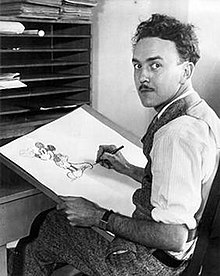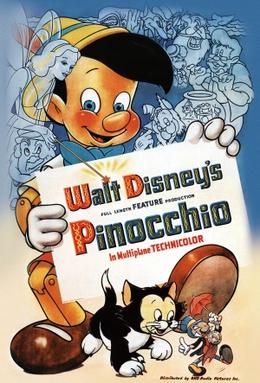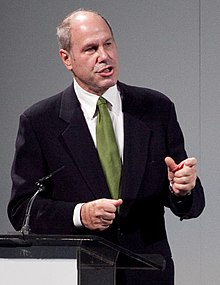



The Walt Disney Company (or Disney) was founded by brothers Walt Disney and Roy Disney in California. However there was a predecessor called "Laugh-O Gram Studio" in Kansas City, which included another special person.
In that studio, Walt and a good friend of his, Ub Iwerks made "Alice's Wonderland" (a short film). After making it the brothers had to file for bankruptcy. However peopled loved the film and soon NY distributor Margaret J. Winkler offered to let them make more films based on the Alice's Wonderland called the Alice Comedies. Walt then decided to move to L.A in order to make a new studio, as well as help his brother Roy who was battling tuberculosis.
After moving to California (more specifically Hollywood), Disney and his brother founded "Disney Brothers Studio", igniting the fire and starting the company we all know and love today. Iwerks and child actor Virginia Davis (star of the Alice Comedies) soon came to Hollywood on Disney's request.
A few years passed by and eventually the proper "Disney studio" was completed. This led to the studio being renamed "The Walt Disney Studio", as well as continuation of distribution from Winkler alongside her husband, Charles Mintz.
Charles Mintz eventually requested a new series to be produced under Universal Pictures. Disney complied and made what is considered the first animated character Walt Disney made. Oswald the Lucky Rabbit. However after around 26 films, Disney requested a larger fee or budget for his film series, while Mintz wanted a decrease. Also around this time, Disney discovered that all the intellectual rights of his character belonged to Universal Studios, prompting Mintz to threaten Disney with not producing films with him. Disney rebelled and as a result, Mintz stole 4 of his animators (besides Iwerks who was loyal to Disney).



| Walt Disney | Roy O. Disney | Ub Iwerks |
|---|
Without Oswald, Iwerks and Disney went back to the drawing table and created a character known as MORTIMER MOUSE. However, Disney's wife disliked the name Mortimer so Disney renamed him to "Mickey Mouse". Walt Disney Studio then produced three films featuring the debut of their new animated star. Plane Crazy (which was not impressive to the audience), Gallopin' Gaucho (which wasn't released as they lacked a distributor), and finally, Steamboat Willie. Steamboat Willie is recognized as one of the world's first cartoon with synchronized sound. This film released on Nov. 15, 1928 to great reviews and comments! This event started the history of the company's mascot


| Concept Art of Mickey | Mickey Mouse in Steamboat Willie (1928) |
|---|
In 1934, after some successes with short films, Disney decided to make his first full length feature film called "Snow White and the Seven Dwarfs". After hearing the idea, Roy and practically all of Hollywood told him not to do it (Hollywood even calling it "Disney's Folly". But with will power and determination, Walt went forward and started production. Disney created a multiplane camera in order to add depth and other important details into the film. After consulting with United Artists, they were given a distribution contract in 1936. Snow White then released almost a year later in 1937.
FUN FACT! Disney exceeded his budget for Snow White by x10! His original budget was 150,000, however his final budget and costs were around 1,500,000
With that aside however, Disney got a box office result of $8,000,000! (164-165M dollars in 2022). With all of its re-releases, Disney got a total of 1 BILLION DOLLARS! With the money, Disney bought a proper studio in Burbank in May of 1940. This studio is now recognized as "Team Burbank" (or something along the lines of that) for the Walt Disney Company.
However, Disney didn't stop there! Disney pushed forth and created more movies like Pinnochio (an ultimate success, however ended in a box office bomb due to World War II cutting off the international markets), Bambi (which is a pretty good success), Fantasia (another box office bomb, however recognized for technical innovations of "Fantasound *a sound reproduction system*"), Dumbo (done really well, especially on a fast and low budget), and many others. Alot of them performed well but some performed bad. During this "Golden Age", one of the company's most important animators went on strike (Disney 1941 strike) for unionization in order to get better pay. Meanwhile, Disney Music Group (Walt Disney Music Company back then) was made (in order to obtain more money through merchandise), along side with production of Cinderella.


| Poster for Snow White | Poster for Pinocchio |
|---|
After going past WWII, Disney made his first animated film in over 8 years (Cinderella previously mentioned in the last "chapter"). Cinderella was a HUGE success, gaining 8 million dollars in a year (against a budget of 2.2 million). After some time, Disney started thinking of making an amusement park based on his visits to Griffith Park in CA. Walt had a couple of names before settling on one big one. At first he though of "Mickey Mouse Park" or "Disneylandia" before finally settling on the name "Disneyland". Due to Roy's doubts on the idea, Walt formed a new company called "Walt Disney Enterprise" (Walt Disney Imagineering today), to help fund for the park. Walt Disney and his friends would then visit other parks in the U.S and Europe for some inspiration. Afterwards, they started production. When starting production they started to realize that their original plan of putting the park nearby the studio in Burbank, Disney would need to acquire more land (more than what he planned for "Mickey Mouse Park").
In total, Disney acquired around 160 acres of land in Anaheim (southeast of L.A, near Orange County). The total cost of obtaining the land was around 1 million dollars (about 6200 per acre of land). Disney wanted the amusement park done by 1955 with the idea of it being clean and perfect. In total by the time the park opened, it costed around 17 million dollars to be constructed.
In order to pay off the consutrction costs however, Disney had alot of work to do. For starters he created some animated movies like Peter Pan (1953), as well as do alot of work on television and production on other films.
Then, after some time, planning, money, and determination, Disneyland opened on July 17, 1955. This grand opening garnered over 90 million people tunning in to the broadcast to see the historic moment!
However, Disney wasn't done yet. He planed to create two other parks! DisneyWorld and a "City of Tommorow (a park/city filled wiht tech advancements). Soon, he renamed his futuristic city to "EPCOT (Experimental Prototype Community of Tommorow". However he was unable to see the opening of DisneyWorld, as well as see his dream of EPCOT come true..
Since Walt Disney has been a heavy chainsmoker since World War 1, his health started to decline rapidly. One day, on November 2, 1965, he went to St. Joseph's Hospital for testing. Doctors were shocked to see a walnut spot on his left lung which they removed, as well as eventually find out it was cancerous. Then finally, on December 15, 1966, Walter Elias Disney passed away due to circulatory collapse caused by lung cancer..

Walt Disney at the Grand Opening of Disneyland
In 1967, after Walt Disney's death, two films were in the makings. The Jungle Book and The Happiest Millionaire. The Jungle Book was a massive success while The Happiest Millionaire ended up being a complete fail to the audience. Soon, the Walt Disney Company started to abandon the thing that made them even recognizable. Animation.
At this point. Roy O. Disney was ready to retire. But wanting to keep his brother's legacy alive he came in and became the first CEO as well as chairman of the board for the company. Roy also renamed DisneyWorld to Walt Disney World in order to make sure people recognize his brother's dream and willpower of never giving up. Over some time, EPCOT became less of what its intended purpose was and rather that of another amusement park.
After some time, it was announced that on-site resorts were finally being added into the Walt Disney World complex, as well as "Magic Kingdom". All of this costed around 400 million dollars and opened on October 1, 1971.
Later that year however, Roy O. Disney would also pass away at St. Joseph Hospital. His cause of death was a cerebral hemorrhage.

Poster for The Jungle Book
After the "Dark Age" of Disney, the company's shareholders at the time of the Disney Dark Age ending (consisting of mostly members from Walt and Roy O. Disney's family) forced Ron Miller (a CEO some of the shareholder's really didn't appreciate) out of the seat of CEO and introduced Michael Eisner (former president of Paramount Pictures *rival company*). Along with Eisner came Frank Wells (president of the comapny). After becoming CEO, Eisner started off by making Disney be considered a major film studio once again. To do this, he tried to make production time around 18 months instead of the usual 4 years Disney was doing. Eisner was also focused on rebuilding the company as well as trying to acquire companies like: ABC, most of ESPN, Fox Family, and The Muppets franchise. Overall, Eisner came in and reignited the burnt out fire that was once the great Walt Disney Company and returned it to its prestige role as a high level film studio.

Michael Eisner in 2010 (post Disney)
In March of 2005, it was announced that Bob Iger would take over the role as CEO from Eisner. To start off, Disney went in and started to try and buy out multiple recognizable and valuable companies which include: Pixar (7.4 Billion ; January 2006), Lucasfilm(4.05 Billion ; October 2012), Marvel(4 Billion ; August 2009), and the mega acquisition of 21st Century Fox(71 Billion, March 2019). Besides these acquisitions, Disney+ became a huge thing and helped maintain viewership of Disney content through a certain event which is featured in the next and so far final chapter.
With these companies in the hands of Disney, Disney became very powerful, as well as created many of our favorite series like: Star Wars! (Lucasfilm), 29 movies + many tv shows (Marvel), some other Star Wars films (20th Century Studios *21st Century Fox*).
A list showing the brand mashups after Disney acquired 21st Century Fox in 2019.
During the Quarantine strikes due to COVID-19, Iger was replaced by Bob Chapek while Iger stayed as Chairman of the Board, as well as overlooking the creative sides of the company. Meanwhile during quarantine, Disney+ came in clutch as people who had the payed subscription were able to watch a good load of content which includes: Disney, Pixar, Star Wars, National Geographic, and a bit of content from the 21st Century Fox Acquisition. Even though Disney was able to do good virutally, physically they were struggling. Due to the sudden closure of parks, the company lost around 2 billion+ dollars in fiscal quarters and the "Parks, Experiences, and Products" division of the company.

These "chapters should overal just explain what there is about Disney(I plan on updating this whenever something interesting happens lol).